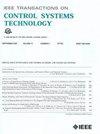Trust-Aware Safe Control for Autonomous Navigation: Estimation of System-to-Human Trust for Trust-Adaptive Control Barrier Functions
IF 4.9
2区 计算机科学
Q1 AUTOMATION & CONTROL SYSTEMS
引用次数: 0
Abstract
A trust-aware safe control system for autonomous navigation in the presence of humans, specifically pedestrians, is presented. The system combines model predictive control (MPC) with control barrier functions (CBFs) and system-to-human trust (SHT) estimation to ensure safe and reliable navigation in human-populated environments. In the context of this article, we refer to SHT as the confidence score that a system has in an agent/pedestrian’s attentiveness. Pedestrian SHT values are computed based on features, extracted from camera sensor images, such as mutual eye contact, smartphone usage, and pose fluctuations and are integrated into the MPC controller’s CBF constraints, allowing the autonomous vehicle to make informed decisions considering pedestrian behavior. Simulations conducted in the CARLA driving simulator demonstrate the feasibility and effectiveness of the proposed system, showcasing more conservative behavior around inattentive pedestrians and vice versa. The results highlight the practicality of the system in real-world applications, providing a promising approach to enhance the safety and efficiency of autonomous navigation systems, especially self-driving vehicles.自主导航的信任感知安全控制:基于信任自适应控制障碍函数的系统对人信任估计
提出了一种基于信任感知的自动导航安全控制系统。该系统将模型预测控制(MPC)与控制障碍函数(cbf)和系统对人信任(SHT)估计相结合,以确保在人口稠密的环境中安全可靠地导航。在本文中,我们将SHT称为系统对代理/行人注意力的置信度得分。行人SHT值是根据从相机传感器图像中提取的特征(如相互眼神接触、智能手机使用情况和姿势波动)计算的,并集成到MPC控制器的CBF约束中,使自动驾驶汽车能够根据行人的行为做出明智的决策。在CARLA驾驶模拟器中进行的仿真验证了所提出系统的可行性和有效性,在不注意行人周围表现出更保守的行为,反之亦然。研究结果突出了该系统在实际应用中的实用性,为提高自主导航系统(尤其是自动驾驶车辆)的安全性和效率提供了一种有前途的方法。
本文章由计算机程序翻译,如有差异,请以英文原文为准。
求助全文
约1分钟内获得全文
求助全文
来源期刊

IEEE Transactions on Control Systems Technology
工程技术-工程:电子与电气
CiteScore
10.70
自引率
2.10%
发文量
218
审稿时长
6.7 months
期刊介绍:
The IEEE Transactions on Control Systems Technology publishes high quality technical papers on technological advances in control engineering. The word technology is from the Greek technologia. The modern meaning is a scientific method to achieve a practical purpose. Control Systems Technology includes all aspects of control engineering needed to implement practical control systems, from analysis and design, through simulation and hardware. A primary purpose of the IEEE Transactions on Control Systems Technology is to have an archival publication which will bridge the gap between theory and practice. Papers are published in the IEEE Transactions on Control System Technology which disclose significant new knowledge, exploratory developments, or practical applications in all aspects of technology needed to implement control systems, from analysis and design through simulation, and hardware.
 求助内容:
求助内容: 应助结果提醒方式:
应助结果提醒方式:


